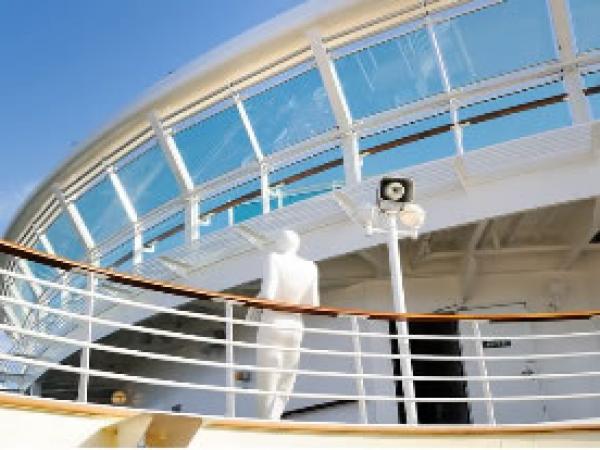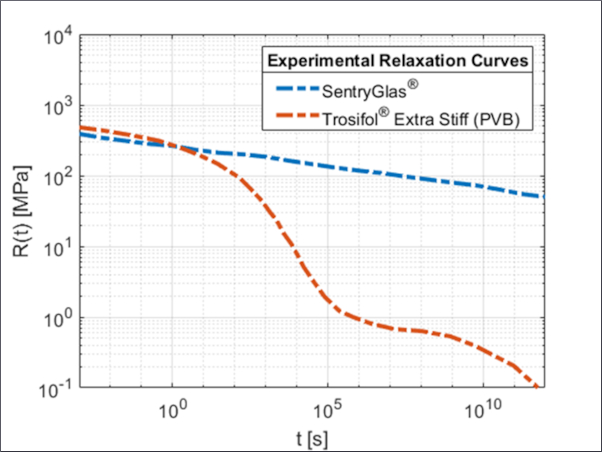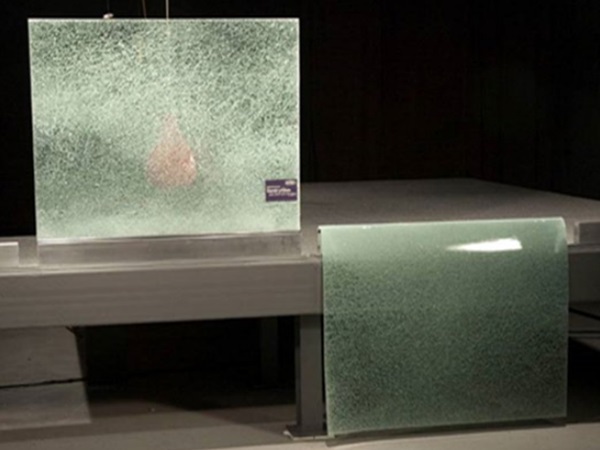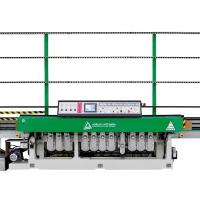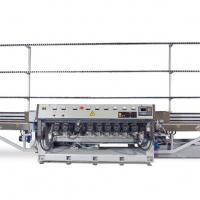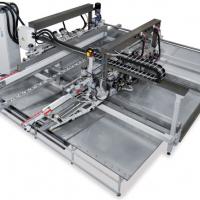Following the successful, initial adoption of tempered laminated glass with DuPont™ SentryGlas® interlayer in the cruise ship the Ruby Princess, Fincantieri, global leader in the building of cruise ships, has specified the same lightweight glazing system from Somec Marine & Architectural Envelopes SRL (Italy) for several elements of the latest flagship to join P&O Cruises’ fleet, the Azura.
The reasons behind the adoption of the Somec system include the use of a lighter, and therefore more cost-effective, laminate made with SentryGlas® as well as compliance with marine safety standards and high durability in the harsh sea environment.

The latest and largest liner to join P&O Cruises’ fleet, the Azura, uses a lightweight glazing system from Somec Marine & Architectural Envelopes SRL (Italy) to form the balustrades of its 900 balconied cabins, for the glazing in public areas and to act as windshields on the upper decks.

As with other marine applications, windshields onboard the Azura, formed by tempered laminated glass using DuPont™ SentryGlas® interlayer, are required to withstand constant wind forces of 250 kg/m2.
The Azura, built by Fincantieri at the Monfalcone yards near Trieste, Italy, was christened on the 10 April 2010 in Southampton (England) before setting off on its maiden voyage to the central Mediterranean. With its 116,000 gross tons, an overall length of 290m, a width of 36m and a maximum speed of 22 knots, Azura is equipped with 1,557 berths spread over its 15 passenger decks, accommodating up to 3096 passengers assisted by 1,226 crew.
Glass balustrades help form balconies for the 900 balconied cabins on decks 8 to 15, and line deck 16 and the sun deck as an effective barrier to passengers. They are used to create a wind shield on deck 19, whilst the same laminate construction is used for the glazing of public corridors of deck 15.
Beyond their visual appeal, the glass balustrades and other elements featuring tempered laminated glass with SentryGlas® interlayer can withstand both human and wave impacts and harsh climates, thereby ensuring passenger safety.
For example, all glazing for marine applications is required to withstand constant wind forces of 250 kg/m2, whilst the strength of toughened safety glass intended for use in marine applications must be in compliance with ISO Standard 614:1989. More recently, Lloyd’s Register’s safety rules for exterior glass balustrades on ferries and passenger ships now require tempered monolithic glass to be replaced by tempered laminated glass for enhanced safety.

Beyond their visual appeal, the glass balustrades and other elements featuring tempered laminated glass with SentryGlas interlayer are required to withstand both human and wave impacts and harsh climates, thereby ensuring passenger safety.

SentryGlas® laminates, used for the glazing of corridors onboard the Azura, show excellent durability performance in marine conditions, thereby ensuring transparency and visibility for passengers and crew alike.
In a balustrade system first developed and installed on the Princess Ruby, the lighter, high performance laminate made with SentryGlas® interlayer ensures compliance with the change in Lloyd’s Register’s safety rules without adding to the overall weight or cost of the system.
“Due to the much enhanced strength behaviour and reduced laminate deflection of the SentryGlas® interlayer versus a conventional PVB laminate, our balustrade system is able to use a thinner laminate construction (6 mm tempered tinted glass + 1.52 mm SentryGlas® + 4 mm tempered tinted glass) of equivalent thickness and weight to the original monolithic tempered glass,” confirms Christian Sossai, engineer at Somec.
In contrast, the use of standard laminated glass with a PVB interlayer would bring with it a significant increase in weight of approximately 10 kilograms per square meter.
The high stiffness of the DuPont interlayer, approximately 100 times that of PVB, means the glass laminate remains intact in the event of accidental breakage, while the dangerous glass fragments remain adhered to the interlayer. Accordingly, the potential danger to passengers is reduced and the structural capacity of the balustrade is retained.
Additionally, SentryGlas® laminates show excellent durability performance in marine conditions, where the glass surface of modern cruise ships needs to be protected against the harsh sea environment and humidity to ensure transparency and visibility.
Extensive product testing, including salt spray fog testing, during which glass panels with SentryGlas® are exposed to 500 consecutive hours of salt spray, has shown the laminated glass panels to remain unchanged in terms of their structural performance and their transparency.
For example measurements of bending stiffness for laminates exposed to varying weathering, up to seven years natural exposure in Florida (temperature excursions between 0 to 45 ºC, and relative humidity up to 90 %) show the bending stiffness of SentryGlas® to be essentially unchanged over time and is direct evidence of the interlayer durability.
The interlayer also passes the USA Florida Dade County requirements of 5 years accelerated weathering with less than 10 percent change in physical properties.
DuPont Glass Laminating Solutions provides materials, services and innovations to makers and specifiers of laminated glass. It helps create a better world by improving home protection and automotive safety, and enabling design of stronger, more energy-efficient buildings that let in more natural light.
DuPont is a science-based products and services company. Founded in 1802, DuPont puts science to work by creating sustainable solutions essential to a better, safer, healthier life for people everywhere. Operating in more than 70 countries, DuPont offers a wide range of innovative products and services for markets including agriculture and food; building and construction; communications; and transportation.
The DuPont Oval, DuPont™ and SentryGlas® are registered trademarks or trademarks of E. I. du Pont de Nemours and Company or its affiliates.
GLS-EU-2010-06
Photos by courtesy of Fincantieri Cantieri Navali Italiani S.p.A.
Editorial Contact:
Birgit Radlinger
Tel.: +49 (0) 61 02/18-2638
Fax: +49 (0) 61 02/18-1318
birgit.radlinger@dupont.co


